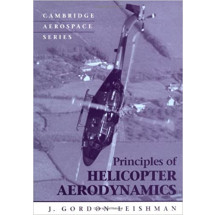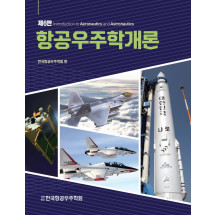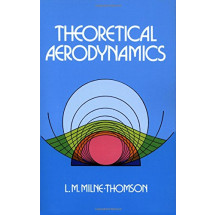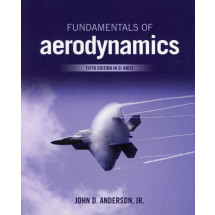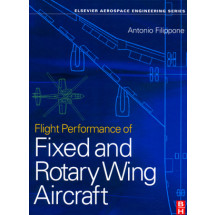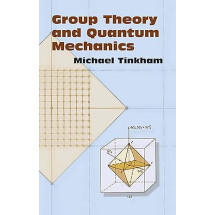Preface xiii
Acknowledgment xvii
1 Introduction to Hypersonic Air-Breathing Propulsion 1
1.1 Hypersonic Flow and Hypersonic Flight 3
1.2 Chemical Propulsion Systems 5
1.3 Classes of Hypersonic Vehicles 12
1.4 Scramjet Engine–Vehicle Integration 15
1.5 Chemical Propulsion Performance Comparison 17
1.6 Hypersonic Air-Breathing Propulsion Historical Overview 19
1.7 Scramjet Flight Demonstration Programs 23
1.8 New Hypersonic Air-Breathing Propulsion Programs 30
1.9 Hypersonic Air-Breathing Propulsion Critical Technologies 33
1.10 Critical Design Issues 36
Questions 37
References 38
2 Theoretical Background 41
2.1 Atmospheric Flight 41
2.2 Air Thermodynamic Models 50
2.3 Fundamental Equations 53
2.4 Thermodynamic Cycle of Air-Breathing Propulsion 56
2.5 Air-Breathing Propulsion Performance Measures 61
2.6 Shock Waves in Supersonic Flow 65
2.7 One-Dimensional Flow with Heat Addition 69
2.8 Closing Remarks 73
Questions 74
References 74
3 Aerothermodynamics of Vehicle-Integrated Scramjet 77
3.1 Aerothermodynamic Environment 78
3.2 Hypersonic Viscous Flow Phenomena 83
3.3 Laminar to Turbulent Transition in Hypersonic Flows 88
3.4 Hypersonic Flowfield for Propulsion-Integrated Vehicles 92
3.5 Convective Heat Transfer or Aerodynamic Heating 104
3.6 NASA X-43A Leading-Edge Flight Hardware 111
3.7 Inlet Blunt Leading-Edge Effects and Entropy Layer Swallowing 113
3.8 Inlet Shock-On-Lip Condition or Inlet Speeding 114
3.9 Shock–Boundary Layer Interactions in the Propulsion Flowpath 116
3.10 Inlet Unstart 118
3.11 Closing Remarks 119
Questions 120
References 120
4 Scramjet Inlet/Forebody and Isolator 123
4.1 Introduction 123
4.2 Engine Inlet Function and Design Requirements 123
4.3 Inlet Types 129
4.4 Inlet Compression System Performance 132
4.5 Hypersonic Inlet Designs 143
4.6 Inlet Operation: Start and Unstart 152
4.7 Inlet Aerodynamics 154
4.8 Isolator 157
Questions 161
References 161
5 Scramjet Combustor 165
5.1 Combustor Process Desired Properties 166
5.2 Combustor Entrance Conditions 167
5.3 Combustion Stoichiometry 172
5.4 Combustion Flowfield 174
5.5 Scramjet Combustor Geometry 192
5.6 Scramjet Combustor Design Issues 197
5.7 Closing Remarks 198
Questions 199
References 199
6 Fuels for Hypersonic Air-Breathing Propulsion 203
6.1 Introduction 204
6.2 Endothermic Fuels 208
6.3 Heat Sink Capacity of Hydrogen and Endothermic Fuels 210
6.4 Fuel Heat Sink Requirements 212
6.5 Ignition Characteristics of Fuels 214
6.6 Mixing Characteristics of Cracked Hydrocarbon Fuels 217
6.7 Structural and Heat Transfer Considerations 218
6.8 Fuel System Integration and Control 219
6.9 Combustion Technical Challenges with Hydrocarbon Fuels 219
6.10 Impact of Fuel Selection on Hypersonic Vehicle Design 221
6.11 Fuels Research for Hypersonic Air-Breathing Propulsion 223
Questions 224
References 225
7 Dual-Mode Combustion Scramjet 227
7.1 Introduction 227
7.2 Phenomenological Description of Dual-Mode Scramjet 229
7.3 Heat Addition to Flow in Constant Area Duct 230
7.4 Divergent Combustor and Heat Release 231
7.5 Combustor Mode Transition Studies 236
7.6 Closing Remarks 247
Questions 247
References 248
8 Scramjet Nozzle/Aftbody 251
8.1 Introduction 251
8.2 Nozzle Geometric Configurations 255
8.3 Nozzle Performance Parameters 260
8.4 Nozzle Flow Losses 265
8.5 SERN Design Approach 266
8.6 Nozzle Ground Testing Issues 268
8.7 Special Topics for Further Research 270
8.8 Closing Remarks 274
Questions 275
References 275
9 Materials, Structures, and Thermal Management 279
9.1 Hypersonic Flight Mission Characteristics 280
9.2 Aerodynamic Heating 281
9.3 Hypersonic Integrated Structures 285
9.4 High-Temperature Materials Requirements and Properties 295
9.5 Selected Materials for Hypersonics 296
9.6 Examples of Vehicle Development Structure and Materials 306
9.7 Materials and Structures Technical Challenges 312
Questions 315
References 315
10 Scramjets and Combined Cycle Propulsion 319
10.1 Aerospace Propulsion 320
10.2 Combined Cycle Propulsion Concepts 322
10.3 From Takeoff to Hypersonic Cruise 324
10.4 Ideal Cycle Analysis of Turbojet and Ramjet Engines 325
10.5 Single-Stage-To-Orbit and Two-State-To-Orbit Vehicles 342
10.6 Propulsion for Spaceplanes 343
10.7 Hydrogen for Hypersonic Air-Breathing Propulsion 352
10.8 Technical Challenges of Combined Cycle Propulsion 359
10.9 Closing Remarks 362
Questions 363
References 364
11 Ground Testing and Evaluation 367
11.1 Introduction 367
11.2 Airframe/Propulsion-Integrated Vehicle Design Requirements 367
11.3 Ground Testing Overview 369
11.4 Ground Testing for the NASA Hyper-X Program 376
11.5 Ground Testing for the USAF X-51A Waverider 390
11.6 ONERA Ground Testing for the European LAPCAT2 Combustor 392
11.7 Vitiated versus Clean Air Hypersonic Wind Tunnel 393
11.8 Diagnostics and Measurements for Scramjet Combustion 394
Questions 396
References 397
12 Analysis, Computational Modeling, and Simulation 401
12.1 Overview of Computational Fluid Dynamics and Turbulence 403
12.2 Surrogate-Based Analysis and Optimization (SBAO) 414
12.3 Flowfield in Highly Integrated Hypersonic Air-breathing Vehicle 416
12.4 NASA Hyper-X Program Computational Modeling Requirements 423
12.5 Overview of Selected CFD Analysis Cases 426
12.6 Closing Remarks 432
Questions 434
References 434
13 Hypersonic Air-Breathing Flight Testing 439
13.1 Introduction 439
13.2 Flight Operational Envelope 439
13.3 Flight Test Technique Concepts 440
13.4 X-43A: Air-lifted, Rocket-boosted Approach 444
13.5 Australia/USA Flight Experiments with Sounding Rockets 449
13.6 Russia CIAM and NASA Partnership for Scramjet Flight Testing 452
13.7 Hypersonic Flight Demonstration Program (HyFly) 453
13.8 Phoenix Air-Launched Small Missile (ALSM) 454
13.9 Gun-Launched Scramjet Missile Testing 455
13.10 X-43A Flight Test Mishap 455
13.11 Closing Remarks 457
References 458
Powering the Future of Transcontinental Flight and Access to Space 461
Glossary 469
Nomenclature 485
Index 489


